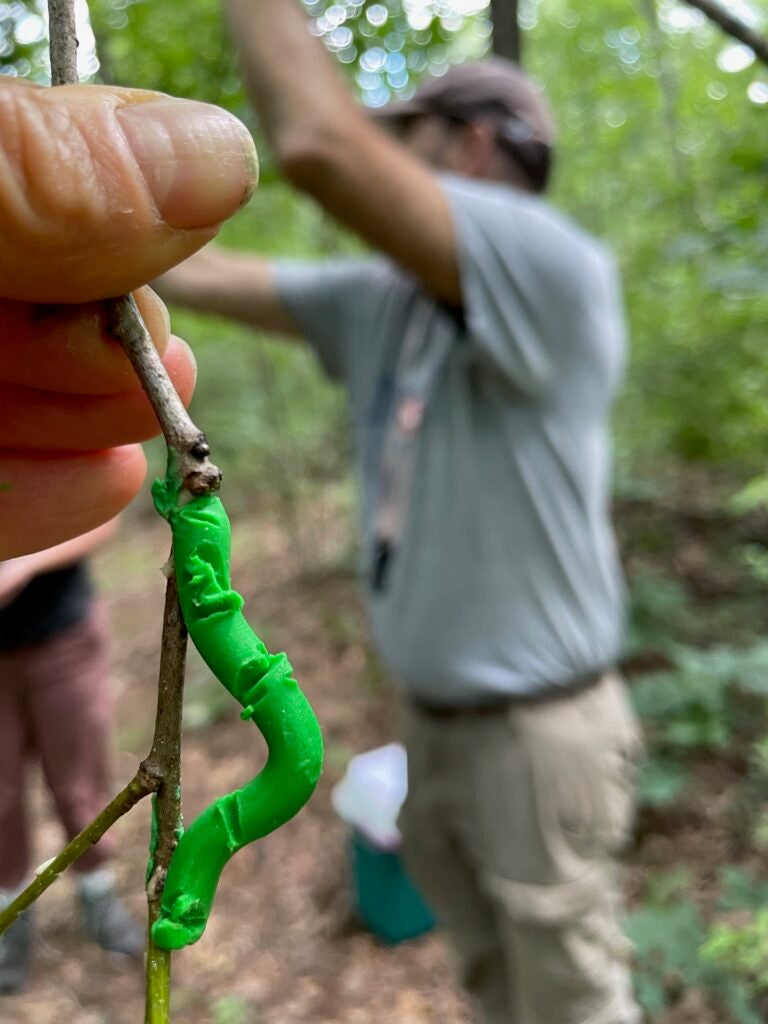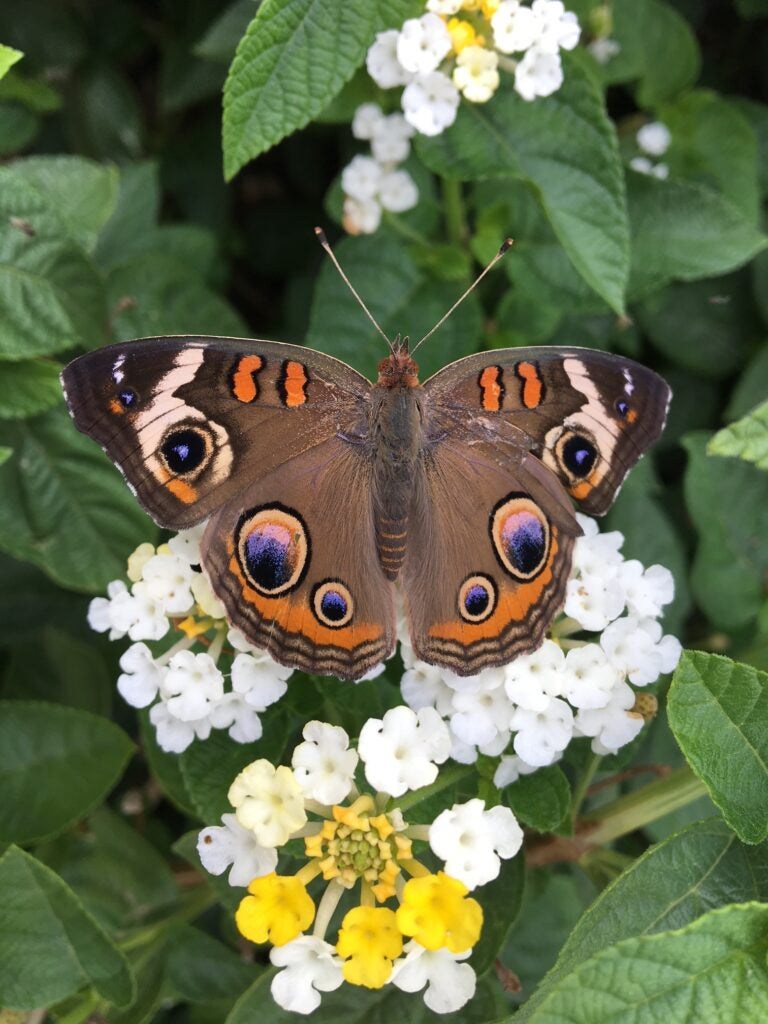A Flutter of Memory
Georgetown professor explores how insects learn—and why it matters
Author: Maya Snyder, SFS ‘24 & Common Home Editor
Even the tiniest creatures play an important role in our ecosystem. As an expert in ecology, Georgetown professor Martha Weiss has long been fascinated by the relationship between insects and the environment.
One area of study that particularly interested Dr. Weiss was the learning ability of butterflies and moths. “For a long time, entomologists have assumed that social insects like bees are the only insects that can learn, and that everybody else is sort of a flying automaton,” Dr. Weiss said. To understand whether this was really the case, she conducted a series of experiments to determine the extent of butterflies’ learning and memory retention abilities.
She was able to train a variety of butterfly species to learn to associate a sugar reward with a range of different cues. “We were able to demonstrate that butterflies are excellent learners, and that they can learn really quickly to associate a reward with a color, shape, or pattern,” Dr. Weiss said. What does this mean from an ecological standpoint? For the butterfly, their learning ability helps them locate nectar from flowers. For the flower, this ability allows them to enjoy a more efficient pollination service.
In another experiment, designed to determine whether a learned memory could persist across the dramatic changes of complete metamorphosis, Dr. Weiss began by training caterpillars to avoid a particular odor. After they underwent metamorphosis, Dr. Weiss would expose them to the same odors they were taught to avoid. Interestingly, her experiment showed that moths do retain memories learned as a caterpillar. The moths that she and her team had trained six weeks before still knew to avoid that odor.

More recently, Dr. Weiss also conducted research on an insect well-known to DC residents: cicadas. Dr. Weiss was curious how the Brood X cicada emergence was going to affect the diverse set of organisms that make up the oak forest community.
She and her fellow research team began the experiment by setting up a field site in a Maryland oak forest, a year prior to the cicada emergence. They studied what kinds of caterpillars were on the oak tree, how much damage the caterpillars were exacting on the oak leaves, and importantly, how frequently or intensely the birds eat the caterpillars on the tree.
To measure the predation of the caterpillars, Dr. Weiss and her team made clay caterpillars out of plasticine. “It’s a simple but very effective technique,” Dr. Weiss said. “They’re soft enough that when a bird sees the caterpillar and bites it, you see the beak mark left in the clay.” Every week, Dr. Weiss and the rest of the research team would put clay caterpillars on the oak trees and return to assess the level of caterpillar damage. Using this technique, they were able to determine a baseline level of bird predation pressure on the caterpillars.
This same procedure was repeated before, during, and after the cicada emergence. The results corroborated the team’s hypothesis. “We predicted that a lot of the birds that ordinarily eat caterpillars when faced with an abundance of undefended, fat, heavy, protein-rich cicadas, would switch over from the caterpillars to cicadas. And that’s exactly what happened.”
The birds clearly switched over from the caterpillars to the cicadas.
Dr. Weiss
Before the cicadas emerged, the data showed about the same level of predation as the year before. When the cicadas surfaced, the bird predation on caterpillars sharply fell and stayed low during the time period cicadas were out. After the adult cicada population began to dwindle, the bird predation level rose again. “The birds clearly switched over from the caterpillars to the cicadas,” noted Dr. Weiss.
This conclusion was supported by the team’s other observations, as well. For instance, the amount of leaf damage that the caterpillars caused also seemed to be higher than the year before, suggesting that the caterpillar population experienced an unusually low level of predation. The team also made several qualitative observations to back up their data. Researchers observed a wide range of bird species in the act of catching cicadas and feeding them to their young.

The impact of cicadas doesn’t end there, however. There are a range of insects, mostly flies and wasps, that lay their eggs inside the bodies of caterpillars. The eggs hatch, and the larvae eat the caterpillars from the inside out— but they do not disturb the essential tissues, so the caterpillars remain alive for a while. Once the parasitoids reach a certain stage of growth, they emerge and turn into flies and wasps.
Ordinarily, birds would have eaten a higher proportion of the parasite-infected caterpillars. However, because the emergence of cicadas resulted in an unusually low level of caterpillar predation, it is likely that there will be a lot more parasitoid flies and wasps surviving next year.
“With this system, we are able to look at how the effects of this gigantic resource pulse of cicadas trickle through the whole ecosystem,” Dr. Weiss said. The full ecological ramifications of cicadas likely will not be seen for years to come, but Dr. Weiss’s research provides a vital glimpse into the dynamics underpinning the oak tree and broader ecological community.
Dr. Weiss is a professor in the Biology department at Georgetown and is also the co-director of the Environmental Studies program. Interested in learning more about her research? Check out her website: https://www.weisslab.org/
